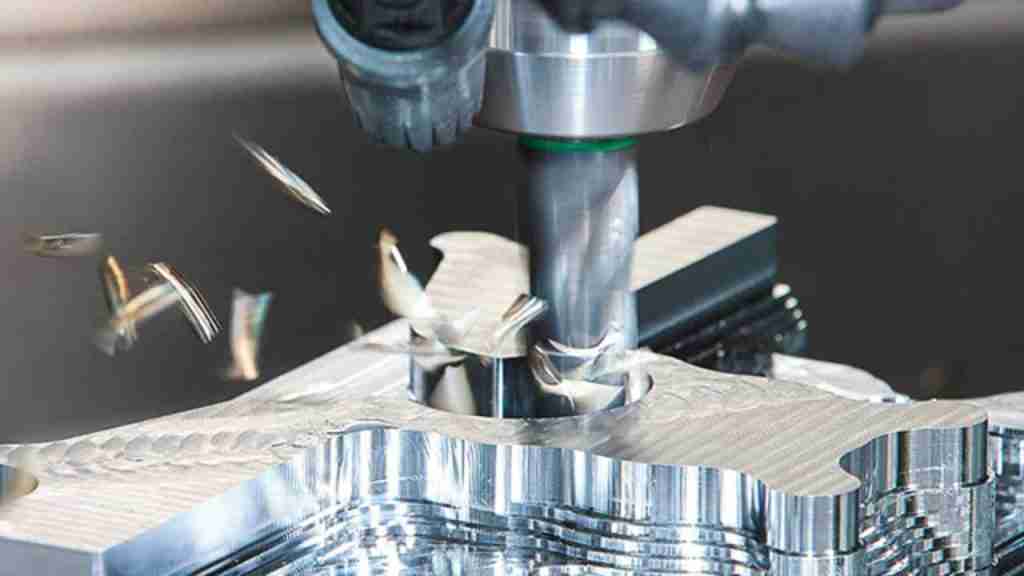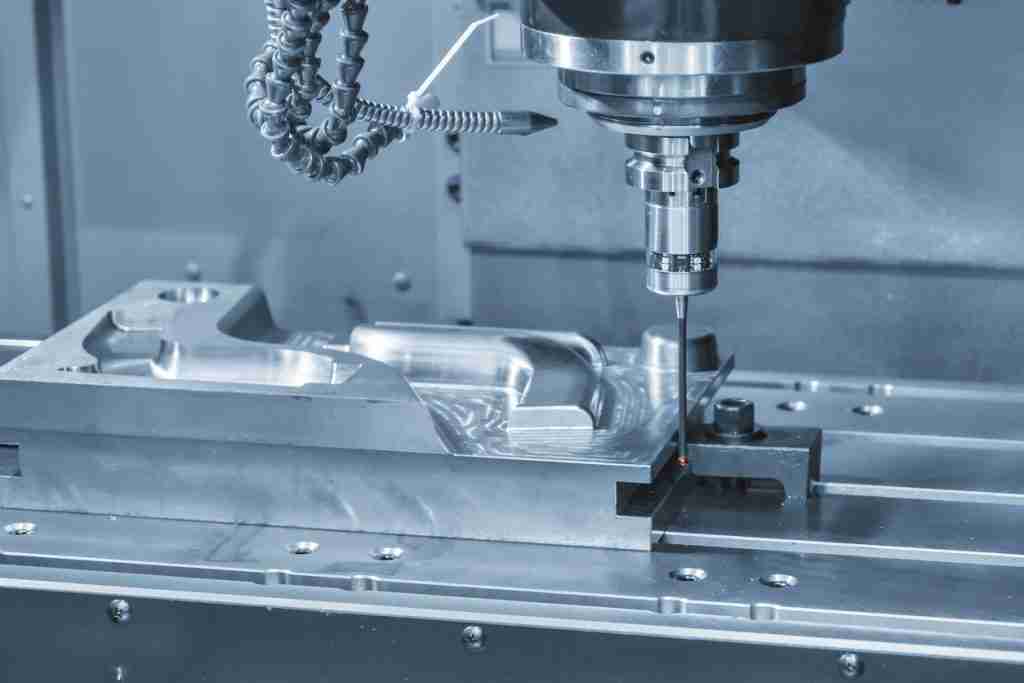When you want to create a prototype or mass-produce an end-use product, CNC machining is a great way to make it happen. However, the cost of machining is often the main reason people stop. Several things can affect the cost of CNC machined parts, including materials, design, surface finish, quantity, and turnaround time. Fortunately, experts with extensive CNC machining experience can greatly help you reduce cutting costs and the final pricing of your product.
This article will summarize our engineers’ top 10 tips, and by following these proven techniques, you can get optimized parts to minimize costs and still meet your design requirements.
What affects the cost of your CNC machined parts?
Before discussing how to reduce costs, let us briefly outline the following 6 factors that affect the price of CNC parts.
Machining Time
The longer it takes to machine a part, the more it will cost. Machining time is usually the main cost driver for CNC machined parts.
Materials
The price of different raw materials often varies. Some materials with similar properties but not commonly used can be much more expensive.
Tolerances
Tighter tolerances can lead to harder machining and increased scrap rates, leading to higher prices.
Quantity
It takes the same amount of CNC programming time to produce 1 piece as 1,000 pieces, so if more quantities are required, the total cost will be shared equally, resulting in a lower cost per product.
Surface Finish
If surface finishes such as coating, smoothing, anodizing, black oxide, Etc. are required, additional machining steps and high costs will be added.
Delivery Time
Short lead times mean that the supplier needs to coordinate more workers to schedule your order first and has to delay the processing of other orders. This is a small factor in the additional cost, which the industry calls expedited processing charges.

These 10 proven design tips will help you save money.
Now that you know where CNC machining costs come from, let us see how to minimize them.
Choosing the most appropriate material Choosing the right material is the most important way to save money when designing your machined parts. What is best for you is not the most expensive material. You must find the most appropriate material for the purpose and function of the part.
Many materials perform almost identically but at vastly different prices, and you can check to see if these alternative materials will work for practical use. For example, replacing SKH51 with SKD61 material can save 50-70% of a commonly used mold thimble cost.
To give you a general idea of the range of costs you might need for your material of choice, I quickly searched prices for different materials to find 6″ x 6″ x 1″ plates. While a common plastic like ABS costs about $15, the same size peeks, known for its robustness and dimensional stability, sells for as much as $225. Similarly, for metals, a sheet of 6061 aluminum costs about $24, a sheet of 304 stainless steel costs $139, and a precision-ground sheet of 316 stainless steel costs up to $285!
On the other hand, softer materials, such as 6061 aluminum, are easier to cut, which means less processing time. Harder materials require more expensive machining tools and are more likely to damage and wear out tools. As a result, harder materials require longer machining times and tool wear rates, which increase the cost of machined parts. 2.
Do not use 90° inside corners when possible.
Sharp or 90-degree inside corners take up more machining processes and time and can add additional costs. However, most parts of inside corners do not need to be 90 degrees, and rounded corners do not interfere with practical use.
If you adjust your design to include rounded corners, the machine can run continuously to create your part. CNC machining tools such as milling cutters and end mills automatically leave rounded inside corners. Small or narrow inside corner radii require more tool travel and special small tools, which can increase machining time and require tool changes. In contrast, a larger radius at the corners means larger tools can cut them efficiently.
For the best design, ensure the inside corner radius’s L:D ratio (length to diameter) is 3:1 or less. In addition, keeping all inside corners with the same radius will reduce machining time. 3.
Minimize internal cavities (deep pockets)
Metal or plastic parts with deep internal cavities (deep cavity) designs are often time-consuming and difficult to machine. Creating a cavity requires removing large amounts of material, which can lead to material waste and make it difficult to remove chips, or may require special processes (such as wire-cut EDM or Sink EDM) to achieve depth. These will cost you more money.
Try to limit the depth of the pocket in your design to 4 times its length, with the ideal design depth being 2 to 3 times its diameter. 4.
Avoid thin-walled designs
Machined parts with too thin walls will take more time to machine because they are very fragile. Moreover, because they often vibrate or deform, it isn’t easy to maintain accurate tolerances. Slow machining, special techniques, and high scrap rates make these thin-walled parts more expensive.
Thick-walled parts are more consistently machined and less expensive to machine. To keep machining prices low, avoid thin-walled designs with wall thicknesses greater than 0.8 mm for metal and 1.5 mm for plastic parts.
Use standard spout size.
When machining parts with threaded holes, the hole depth and thread size can affect the total price; usually, increasing the length of the thread in the fixture will not make the part stronger, so you do not need to go through a hole 3 times larger than the hole diameter and shorten it as much as possible. If the thread length is 3 times the diameter, it increases the risk of breakage and requires more machining time. Very small threads need to be tapped by hand, making them more expensive.
Therefore, using a standard tap size reduces the risk and costs. For example, it is more common and cost-effective to use a 4-40 size tap than a 3-38 size. Also, if possible, design threaded holes larger than 2-56″. That will save you money. 6.

Avoid designing complex parts
Machining oversized, microsized, or complex design parts requires special tooling, multi-axis CNC machines, or custom fixturing, all of which can add to the total cost.
In some cases, such as complex parts that require operations on multiple faces, you may reduce the cost by splitting the part into 2 or more separate parts that can be welded or bolted together after machining.
Avoid surface finishing, such as TiN coating, DLC coating, Etc.
Surface finishing of CNC machined parts is an additional process to obtain desired surface characteristics or properties for aesthetic, corrosion, wear resistance, or other purposes. However, these finishes, such as heat treatment, sandblasting, special coatings, anodizing, Etc. can add to the total cost. So they should be carefully evaluated according to the purpose.
If you want to reduce your total cost, a good choice is to go with a standard machined finish. Machined finishes are quick, affordable, and often used for non-display applications such as mounting brackets. The surface finish is equivalent to 125 RA (3.2 RA m).
Avoid overuse of tight tolerances.
DEK has the ultra-precision machining equipment and production experience to meet tolerances as tight as ±0.001mm. However, we still recommend tight tolerances not to be used excessively for non-special purposes. This is because the tighter the tolerance, the more processes and time required by the factory, which means a much higher price.
Not every part needs tight tolerances except precision mold, medical, and aerospace. We recommend that other parts follow common standards, such as ISO 2768, which is reasonable for CNC machined part designs.
Batch ordering
While modern CNC lathes and mills can run more efficiently than ever before, they still require programming and setup by engineers. It is well known that the number of parts you order significantly impacts the unit price – ordering 10,000 or just 10 parts can make a big difference. This is because mass production of identical parts maximizes the productivity and cost-effectiveness of CNC machining.
Please do so if you need 50K identical parts after testing samples. Ordering 50K at a time is much cheaper than ordering 5000 parts 10 times.
Advance work and prepare production plans in advance
Develop product blueprints, proceed with design work, and complete the final product design before production begins. This will give the CNC machining supplier enough time to purchase raw materials, develop a production plan and deliver the product within the agreed time frame. According to Dongguan Gallo’s years of production experience, a longer lead time can reduce overall costs by 4-6%.
Overview
These are the top 10 design tips to help you reduce the cost of machined parts; keep it simple and follow the standards. Getting these design tips into your head and applying them to your product will help you reduce unnecessary costs.

